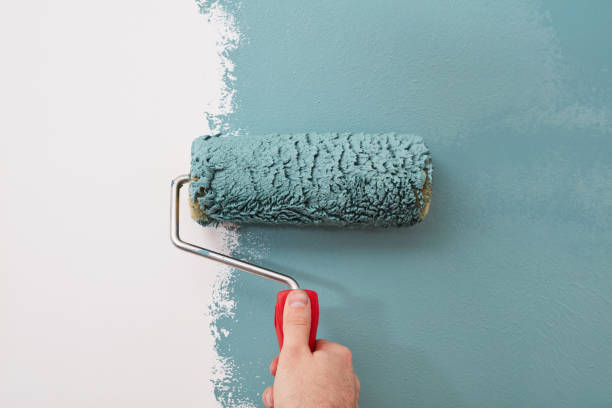
- Break down the cost differences between standard paints and green alternatives, addressing long-term cost benefits related to health and maintenance that might compensate for any upfront price disparities.
Posted by on 2024-01-10
When discussing the cost implications of standard versus eco-friendly paints, it's pivotal to dissect not only the immediate pricing but also the extended financial repercussions, including health-related savings and diminished maintenance expenses.
Standard paints often contain volatile organic compounds (VOCs), chemicals that vaporize into the atmosphere at room temperature. These are typically more affordable off-the-shelf due to their conventional production processes and widespread use. On the flip side, green alternatives are designed with sustainability in mind, featuring low or zero VOC content. This environmental consideration in their formulation usually translates into higher upfront costs for consumers.
The price disparity can be quite stark; however, when one delves into long-term analysis, green paints offer a tapestry of cost-saving benefits. Firstly, reduced VOC levels play a significant role in safeguarding indoor air quality. Inhabitants thus endure fewer health risks associated with chemical exposure such as respiratory issues or allergic reactions – conditions that can lead to increased medical bills and lost productivity over time.
Moreover, green paints have evolved considerably in terms of durability. Many now boast longevity comparable to or even surpassing traditional paints. With this enhanced lifespan comes a decrease in frequency for repainting projects – a major contributor to overall maintenance costs throughout a building's life cycle.
Also noteworthy is the potential impact on property value; homes and commercial spaces boasting eco-friendly features increasingly appeal to environmentally conscious buyers and renters. This desirability can translate into higher resale values or rental rates – an economic advantage not reflected in upfront paint prices.
In conclusion, while green alternatives may seem less economically feasible at first glance due to their elevated initial costs compared to standard options, they offer an assortment of longer-term financial advantages. Healthier living environments reduce potential healthcare expenditures while sturdier formulations cut down on maintenance needs. Additionally, market trends toward sustainability can positively affect property valuations over time. Thus, when viewed through a broader fiscal lens, investing in green paint might not only align with ecological values but also prove judicious from an economic standpoint.
Standard paints often contain volatile organic compounds (VOCs), chemicals that vaporize into the atmosphere at room temperature. These are typically more affordable off-the-shelf due to their conventional production processes and widespread use. On the flip side, green alternatives are designed with sustainability in mind, featuring low or zero VOC content. This environmental consideration in their formulation usually translates into higher upfront costs for consumers.
The price disparity can be quite stark; however, when one delves into long-term analysis, green paints offer a tapestry of cost-saving benefits. Firstly, reduced VOC levels play a significant role in safeguarding indoor air quality. Inhabitants thus endure fewer health risks associated with chemical exposure such as respiratory issues or allergic reactions – conditions that can lead to increased medical bills and lost productivity over time.
Moreover, green paints have evolved considerably in terms of durability. Many now boast longevity comparable to or even surpassing traditional paints. With this enhanced lifespan comes a decrease in frequency for repainting projects – a major contributor to overall maintenance costs throughout a building's life cycle.
Also noteworthy is the potential impact on property value; homes and commercial spaces boasting eco-friendly features increasingly appeal to environmentally conscious buyers and renters. This desirability can translate into higher resale values or rental rates – an economic advantage not reflected in upfront paint prices.
In conclusion, while green alternatives may seem less economically feasible at first glance due to their elevated initial costs compared to standard options, they offer an assortment of longer-term financial advantages. Healthier living environments reduce potential healthcare expenditures while sturdier formulations cut down on maintenance needs. Additionally, market trends toward sustainability can positively affect property valuations over time. Thus, when viewed through a broader fiscal lens, investing in green paint might not only align with ecological values but also prove judicious from an economic standpoint.